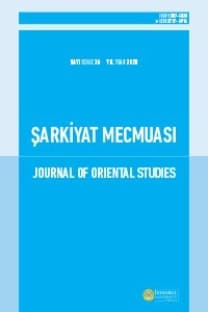Hastalık Anlatısı ve Avangard Çin Edebiyatı'nın Modern Konusu (1985-2000)
Öz: Hastalık, modern ve çağdaş Çinli yazarlar tarafından en çok tercih edilen temalardan biridir. Hastalık anlatıları, modern konunun sınırlarını farklı sosyal ve tarihsel bağlamlarda yansıtmaktadır. 1985'te ortaya çıkan yeni bir edebiyat tarzı olan Çin Avangard edebiyatı her tür hastalık anlatısıyla doludur. Bunlar arasında zihinsel hastalık ve şehir hastalıklarının anlatısı en tipik olanlarıdır. Zihinsel hastalığın anlatısı çoğunlukla 1980’lerin Çin Avangard edebiyatında ortaya çıktı. Yeni Çağ literatüründe (1976-1985) Aydınlanma rasyonalitesinin baskın pozisyonunu, insan doğasında irrasyonalitenin varlığını kabul ederek yapılandırdı. Kentsel hastalıkların anlatımı 1990'larda, Çin'in piyasa ekonomisini geliştirmesini hızlandırdığı dönemde ortaya çıktı. Kentsel hastalığın anlatımı, okurlara materyalist bir toplumun ahlaki ve yıkılışı hakkında ahlaki bir yansıma ile içgörü sahibi olmaları için bir ayna sunmaktadır. Bu makale, Çin Avangard edebiyatının en etkili eserlerinin okunmasıyla hastalık anlatımı ve modern konu arasındaki ilişkiyi incelemektedir.
Narratives of Disease and The Modern Subject in Contemporary Chinese Avant-Garde Literature (1985-2000)
Abstract: The narrative of disease is one of the most preferred themes used by modern and contemporary Chinese writers. Disease narratives reflect the limitations of the modern individual’s state in different social and historical contexts. Chinese Avant-garde Literature, as a new literary movement, is considered to have emerged around 1985; during this time, it manifested itself through all different kinds of narrative forms of disease and trauma. Among these forms, narratives of a diseased state of mind as well as a diseased urban environment are the most typical ones observed. Narrative themes of the “disease of the mind” began commonly appearing in Chinese Avant-garde Literary works in the 1980s. These works often aimed at deconstructing the dominant ideological positon of the so-called New Enlightenment Rationality during the Chinese New Era (1976-1985) by admitting to the existence of the irrationality of human nature and its influences on the individual in society. The narrative of urban disease, on the other hand, began appearing during the 1990s when China began its acceleration of its newly formed market economy. In contrast to the previous disease narrative, the narrative of urban disease offered readers a mirror into urban society and gave them insight into the morbidity and decadence of a materialistic society. This article analyses the relationship between these disease narratives and the modern individual’s subjective consciousness through a close reading of some of the most influential works of Chinese Avant-garde literature.
___
- 1.ADORNO, TW. (1997) Dialectic of Enlightenment. 2nd Ed. London: Verso Press.
- 2.CALINESCU, M. (2006) Five Faces of Modernity: Modernism, Avant-garde, Decadence, Kitsch, Postmodernism. 3rd Ed. Durham, NC: Duke UP.
- 3.CAN, X. (1997) A Strange Kind of Brain Damage. BOMB. 61(10). pp.98-99.
- 4.CAN, X. (1989) Dialogues in Paradise. 1st Ed. Evanston: Northwestern University Press.
- 5.FOUCAULT, M. (1997) The Birth of the Clinic. 3rd Ed. London: Routledge.
- 6.Jia, P. (2016) Ruined City: A Novel. 1st Ed. Oklahoma: University of Oklahoma Press.
- 7.WANG, J. (1998) China’s Avant-garde Fiction: An Anthology. 1st Ed. Durham, NC: Duke UP.
- 8.SCHUMPETER, JA. (1950) capitalism, socialism, and Democracy. 3rd Ed. London: George Allen & Unwin LTD.
- 9.SU, T. (1996) Rice. 1st Ed. Nanjing: Jiangsu Art Publish house.
- 10.ZONG, P. (1987) Magnum Opus of Zong Pu. 1st Ed. Zhengzhou: Henan Renmin publish House.
